The newest registered user is bitaacademy
Our users have posted a total of 44629 messages in 6567 subjects

WORLD CLOCK
INFORMATION VINE * 50 Colossal Facts About The Colosseum *.
Valley of the Sun Casual Club :: WORDS , FACTS , DATES , GAMES & TRIVIA & HISTORY :: INFORMATION VINE
 INFORMATION VINE * 50 Colossal Facts About The Colosseum *.
INFORMATION VINE * 50 Colossal Facts About The Colosseum *.

Photo Courtesy: [Andreas Tille/Wikimedia Commons]
The Colosseum is one of the most famous landmarks in Italy and a lasting symbol of the splendor of Imperial Rome. It has stood for nearly 2,000 years and has witnessed the rise and fall of empires, rulers, and entire civilizations.
This ancient amphitheater has endured fires, earthquakes, and considerable political upheaval. It has truly withstood the test of time and continues to be an integral part of the modern city of Rome. How much do you know about the Colosseum? From its legendary inaugural games in 80 A.D. to its extensive restoration in the 1990s, here are 50 facts about the Colosseum.
It Was Not Originally Called The Colosseum
The structure we now know as the Colosseum was originally called the amphitheatrum, which is the Latin word for amphitheater. It may have also been referred to as the Amphitheatrum Caesareum, since it was built under the patronage of Caesar, the Roman emperor.

Photo Courtesy: [FoekeNoppert/Wikimedia Commons]
Because the Flavian dynasty was ruling the Roman Empire at the time that the Colosseum was built, later scholars have referred to the structure as the Flavian Amphitheater. The Colosseum would not obtain its current name until around the 6th century A.D.
A Massive Villa Once Occupied The Site
Prior to the construction of the Colosseum, the site was occupied by the Domus Aurea, a massive and luxurious villa built by the Roman emperor Nero. One of the most notable features of this villa was an extensive manmade lake. The ruins of the Domus Aurea can be seen in the image below.

Photo Courtesy: [Matthias Kabel/Wikimedia Commons]
After the death of Nero, the lake was drained and in its place, a large arena was built. Unlike Nero's lake, the arena could be enjoyed by all of the people of Rome. This arena would become known as the Colosseum.
It Could Hold Up To 50,000 People
Though it was once claimed that the Colosseum could hold up to 87,000 people, modern historians have determined that the actual amount was significantly lower. It is believed that the amphitheater could accommodate anywhere from 45,000 to 50,000 people at one time.

Photo Courtesy: [Bjarki Sigursveinsson/Wikimedia Commons]
Unfortunately, age and natural disasters have gradually worn the structure and much of its seating is now gone. While the site is still used for events, they are rarely held inside the Colosseum due to the lack of sufficient seating.
It Is The Largest Amphitheater Ever Built
At the time of its construction, the Colosseum was the largest amphitheater ever built. It measures over 620 feet in length and over 511 feet in width, with a base area that is over 258,000 square feet.

Photo Courtesy: [Jean-Pol GRANDMONT/Wikimedia Commons]
In ancient times, the perimeter of the Colosseum was 1,788 feet. Since its construction, the structure has withstood considerable wear and tear, partially due to the earthquakes which have ravaged the area. Although the Colosseum measures about half the size of a modern football field, it is still the largest amphitheater in the world.
It Is Twice The Size Of A Typical Roman Theater
One aspect of the Colosseum that sets it apart from other Roman theaters and arenas is its size. Its internal and external design resembles two Roman theaters situated back to back. This theater in Amman, Jordan is a more typical example of a Roman theater.

Photo Courtesy: [Bernard Gagnon/Wikimedia Commons]
Roman theaters were built from the ground up using stone or cement. In contrast, Greek theaters were built into hillsides and carved out of the rock.
It Was Named After A Giant Statue Of Nero
A giant bronze statue of Nero, known as a colossus, stood next to the Colosseum after being moved from its original site by Emperor Hadrian in 124 A.D. This 98-foot monument to Nero was modified into a statue of the Roman sun god Sol and stood next to the amphitheater for several centuries until it mysteriously disappeared.

Photo Courtesy: [22mil/Wikimedia Commons]
Images of Nero and the Colossus can be seen on this ancient Roman coin. It is widely believed by historians that the Flavian Amphitheater became known as the Colosseum due to its proximity to this elaborate monument.
Construction Took 10 Years
The construction of the Colosseum took place over a period of 10 years. Building began in 70 A.D., shortly after the Flavian dynasty came to power.

Photo Courtesy: [Wikimedia Commons]
The first two Flavian emperors ruled while the Colosseum was being built. In 80 A.D., the Colosseum was completed and opened to the Roman public. The third Flavian emperor would make subsequent modifications to the Colosseum during his rule. The three emperors of the Flavian dynasty are shown in the Roman coins pictured above.
Construction Began Under Emperor Vespasian
The decision to build the Colosseum was made by Emperor Vespasian, who ruled the Roman Empire from 69 to 79 A.D. He was the first of the three Flavian emperors.

Photo Courtesy: [Sailko/Wikimedia Commons]
The decision to build the Colosseum emphasized Vespasian's commitment to the people of Rome rather than to his own amusement, as had been the case with Nero. Unfortunately, Vespasian did not live to see the completion of the arena, as he died of illness in 79 A.D.
Construction Finished Under Emperor Titus
After the death of Vespasian in 79 A.D., his son Titus became the new emperor. Titus was 39 years old when he came to power and he only ruled for two years.

Photo Courtesy: [Sailko/Wikimedia Commons]
During his relatively brief rule, Titus completed the Colosseum and guided the Empire through two major disasters, the eruption of Mount Vesuvius in 79 A.D. and a fire that devastated Rome the following year. In 81 A.D., Titus died of a fever, allegedly at the same farmhouse where his father had passed away only two years earlier.
It Was Partially Built By Jewish Slaves
Following their successful siege of Jerusalem in 70 A.D., the Roman Empire enslaved nearly 100,000 Jews and brought them back to Rome to serve as unpaid laborers. As it was the standard Roman practice to humiliate conquered populations, historians believe that these Jewish slaves were part of the large workforce that built the Colosseum.

Photo Courtesy: [Dnalor 01/Wikimedia Commons]
The siege and subsequent plundering of Jerusalem is depicted on the Arch of Titus, who was the emperor at the time. A close look at the arch and its depiction of the spoils taken from Jerusalem is shown in the photograph above.
9,000 Animals Were Killed In The Inaugural Games
The inaugural games for the Colosseum were held in 80 A.D. By the order of Emperor Titus, these games were intended to celebrate the recent completion of the arena.

Photo Courtesy: [PD-US/Wikimedia Commons]
Over the next 100 days, an estimated 9,000 animals were killed, with as many as 5,000 being killed in a single day, according to some historians. An estimated 2,000 people were also killed during this time.
Modifications Were Made Under Emperor Domitian
The youngest of Vespasian's two sons, Domitian became emperor after the death of Titus in 81 A.D. His reign lasted 15 years, longer than both his father and his older brother.

Photo Courtesy: [Sailko/Wikimedia Commons]
Though the Colosseum was already finished when he came to power, Domitian made some modifications to the structure during his rule. Among these modifications was a series of tunnels, which were used to contain slaves and animals. He also added more seats to the Colosseum by placing a gallery at the top. Domitian's rule came to an abrupt end in 96 A.D. when he was assassinated by court officials.
Admission Was Free
Roman citizens were able to enjoy the games at the Colosseum for free. Despite not being charged any price for admission, spectators were still given tickets made of pottery shards.

Photo Courtesy: [Jerzy Strzelecki/Wikimedia Commons]
These pottery shards were numbered to designate the area and row in which the spectator would be seated. Seating was determined by social status, with the higher classes having the lower seats and the lower classes having the higher seats.
It Has 80 Entrances
The Colosseum has a total of 80 entrances, each of which are numbered. 76 were for use by common spectators, including the lower-ranking members of society such as women and slaves.

Photo Courtesy: [WarpFlyght/Wikimedia Commons]
The remaining four entrances were reserved for people of importance such as the emperor, patricians, and visiting dignitaries. The numbers above the entrances to the Colosseum have survived the test of time and can still be seen today.
It Could Be Easily Evacuated
One of the most innovative architectural elements of the Colosseum was its vomitoria. Derived from the Latin word vomo, which means "to spew forth", these passages were located below or behind the rows of seats lining the interior of the Colosseum.

Photo Courtesy: [Przemek P/Wikimedia Commons]
The purpose of the vomitoria was to allow people to quickly enter or exit the Colosseum. In the event of an emergency evacuation, spectators could leave the amphitheater within minutes through the strategically placed vomitoria. Similar passages are implemented in modern stadiums, although they are no longer referred to by their original Latin name.
It Had A Retractable Awning
To shield spectators from the rain or the sun, the Colosseum had a massive awning known as a velarium. The velarium extended across much of the building and helped circulate air, which in turn kept the amphitheater cool.

Photo Courtesy: [Jean-Léon Gérôme/Wikimedia Commons]
Because the Colosseum was the largest amphitheater at the time, its velarium was the largest of its kind. Historians believe that sailors would have constructed, operated, and maintained the velarium due to their experience in rigging and sailmaking.
The Emperor Had The Best Seat
The seating at the Colosseum reflected the heavily stratified society of Imperial Rome. At the top of the social ladder was the Roman emperor and the priestesses of Vesta, goddess of the hearth.

Photo Courtesy: [PD-US/Wikimedia Commons]
The location of the emperor's box allowed him to take part in the games if he wished. Emperor Commodus was known to kill the animals in the arena from his seat using his impressive archery skills. He even entered the arena on occasion, where he would combat the gladiators directly. The painting above depicts Commodus in the arena.
The Senators Sat Next To The Emperor
On the same level as the emperor and the priestesses of Hestia were the members of the senatorial class. The senators were even allowed to bring their own chairs to the extensive platform, also known as a podium.

Photo Courtesy: [Jordiferrer/Wikimedia Commons]
Interestingly, the names of some of these senators can still be seen on the stonework, where they were inscribed centuries before. It is believed that the inscriptions served as a means of reserving the seats specifically for these senators.
The Equites Sat Above The Senators
In the row above the senators sat the equites, who ranked just below them on the social ladder. Despite their lower ranking, these nobles held a large amount of wealth in Roman society.

Photo Courtesy: [Benjamín Núñez González/Wikimedia Commons]
The equites possessed large estates and played a major role in the manufacturing, shipping, and mining industries. In a modern context, these equites would be commonly referred to as "knights".
The Plebeians Sat Above The Equites
The plebeians, or the ordinary free citizens, sat in two sections just above the equites. Despite being generally considered "commoners", there were still two different kinds of plebeians: the wealthy and the poor.

Photo Courtesy: [Benjamín Núñez González/Wikimedia Commons]
In keeping with the social stratification, the wealthy plebeians sat on the lower of the two rows, which was known as the summum. The poor sat on the higher of the two rows, which was known as the immum.
Women Had To Sit At The Top
During the reign of Emperor Domitian, a gallery was added at the very top of the Colosseum. This gallery was strictly for lower-class citizens including the poor, slaves, and women.

Photo Courtesy: [Benjamín Núñez González/Wikimedia Commons]
In addition to having to go to the very top of the Colosseum to watch the games, the majority of women, slaves, and the poor would have had to stand the entire time. The limited seating that would have been available consisted of steep wooden benches and would have hardly been comfortable for the day-long events.
Some People Were Excluded
While the lower classes of Roman society had to sit at the very top of the Colosseum, certain people were completely excluded from the premises. These included gravediggers, actors, and former gladiators.

Photo Courtesy: [Bengt Nyman/Wikimedia Commons]
Considering the ordeal that gladiators had to go through, it is surprising to think that they would even try to go to the Colosseum. Nevertheless, the Colosseum remained a popular source of entertainment for many Roman citizens and was packed with eager crowds almost every day.
It Hosted Gladiatorial Games
The gladiatorial contests were one of the most popular events at the Colosseum. In these violent spectacles, combatants called gladiators would face off against wild animals, condemned criminals, and even other gladiators.

Photo Courtesy: [Jean-Léon Gérôme/Wikimedia Commons]
The popularity of gladiator games reached its peak sometime between the 1st century B.C. and the 2nd century A.D. Once Christianity became the state religion of the Roman Empire, the games began to diminish in popularity and eventually ceased altogether.
Naval Battles Were Staged In The Arena
The naumachia, which is derived from the Greek word for naval combat, was a popular form of entertainment in Ancient Rome. It involved staged naval battles in large basins or buildings, which were filled with water.

Photo Courtesy: [Ulpiano Checa/Wikimedia Commons]
Once the arena was filled with enough water, combatants, rowers, and even warships would be put into it for this grisly spectacle. The first naumachia at the Colosseum took place during its inaugural games and would prove to be the first of many. Given the smaller size of the Colosseum compared to other arenas used for such games, the naumachia held there were probably less elaborate than what is depicted in the painting above.
Artists Would Create Nature Scenes Inside The Arena
To make the games even more elaborate, architects, painters, and technicians would create colorful scenes of nature inside the arena. First, they would plant real trees and bushes inside the arena to simulate an actual forest. Then they would add a variety of animals to complete the scene.

Photo Courtesy: [Bengt Nyman/Wikimedia Commons]
These recreations of nature served several purposes. For the city dwellers of Rome, it provided a glimpse of the natural environments they were not accustomed to. The scenes would also be utilized for hunts or dramatic reenactments of episodes from Roman mythology. In the event of an execution, the condemned man or woman would be placed in the environment and killed in a way that stayed true to mythology, such as being burned to death or mauled by wild animals.
It Is An Important Part Of Christian History
In the history of the Christian religion, the Colosseum is thought to have played an important role in the martyrdom of many believers. While some academics believe that the majority of Christian martyrdoms took place in other locations, the Colosseum has nevertheless become a symbol of religious persecution in Imperial Rome.

Photo Courtesy: [Jean-Léon Gérôme/Wikimedia Commons]
This 1883 painting by Jean-Léon Gérôme depicts a group of Christians praying together as a number of vicious lions are released into the arena. Whether or not this kind of event frequently happened at the Colosseum, it is known that the Christians experienced much persecution under the rule of the Roman emperors.
Thousands Of Animals Were Killed In The Arena
Because of the vastness of the Roman Empire, it had a wide range of animals at its disposal. The gruesome games of the Colosseum required hundreds and hundreds of animals, including lions, tigers, rhinos, crocodiles, and even ostriches.

Photo Courtesy: [Frans Floris I/Wikimedia Commons]
As a result, animals were taken from all over the Roman Empire to be used in the games. Over the many years in which the Colosseum hosted these games, thousands of animals and people were brutally slain.
It Contributed To The Extinction Of Some Animals
Unsurprisingly, the senseless killings of so many animals eventually had their consequences. Over time, fewer and fewer of these animals could be found in their natural habitat.

Photo Courtesy: [Marie-Lan Nguyen/Wikimedia Commons]
Much of the wildlife in North Africa and the Mediterranean region was devastated by these games, with some species being driven to complete extinction. Among these species was the North African elephant, which had also been captured for military use. A mosaic of such an elephant is shown in the image above.
The Games Were Very Expensive
As one can imagine, the games at the colosseum were very expensive to produce year after year. One primary source of expense was having to train and house gladiators. When gladiators were killed in combat, new ones would have to be trained to take their place in the arena.

Photo Courtesy: [PD-US/Wikimedia Commons]
Another aspect of the games that was very costly was the wild animals. Over the centuries that the games were held, thousands and thousands of animals were captured from the wild and then killed in the arena. As the Roman Empire began to decline, the recurring costs of these games began to have more and more of an impact on the economy.
It Was Damaged By A Fire
In 217 A.D., a raging fire swept through the Colosseum and destroyed its upper sections, which were built from wood. According to the Roman historian Cassius Dio, the fire was initially caused by lightning.

Photo Courtesy: [Marten253/Wikimedia Commons]
The Colosseum suffered extensive damage from the fire and was not fully repaired until 240 A.D., more than 20 years after the fire. Despite this, additional repairs were made to the Colosseum around 250 and even later in 320.
The Gladiatorial Games Ended In The 5th Century
The last known gladiatorial games were during the reign of Emperor Honorius, who is shown in the painting below. He had previously tried to ban the games in 399 A.D., albeit unsuccessfully. In 404, an Egyptian monk named Telemachus arrived in Rome and upon witnessing the games in the Colosseum, tried to stop them.

Photo Courtesy: [Jean-Paul Laurens/Wikimedia Commons]
The angry and bloodthirsty crowd stoned Telemachus to death, but Honorius was greatly impacted by his martyrdom. In response, he issued a second and final ban on the gladiatorial games. The hunting of animals continued to be done in the Colosseum until at least 523 A.D., but eventually, that ceased as well.
The Animal Hunts Ended In The 6th Century
Even after the gladiatorial games ceased, the hunting and killing of wild animals in the arena continued until the 6th century. Though less gruesome than the gladiatorial games, these events were still very expensive.

Photo Courtesy: [Palazzo Massimo alle Terme/Wikimedia Commons]
The cost of the animal hunts eventually came to the attention of King Theodoric the Great, who is pictured on the coin above. While he allowed the last of these games to be held at the Colosseum in 523 A.D., he complained about their lavish expense. As a result, this violent chapter of the Colosseum's history finally came to an end.
It Fell Into Disrepair
After the games ended, the Colosseum gradually fell into a state of disrepair. While some attempts were made to remedy the situation, the amphitheater became less and less of a priority due to its significantly reduced role in Roman society.

Photo Courtesy: [Giovanni Paolo Panini/Wikimedia Commons]
Furthermore, the Roman Empire was not as wealthy as it had once been. As a result, the Colosseum continued to deteriorate for several centuries.
It Was Used For Many Different Purposes
Over time, the Colosseum was used for many different purposes. The arena was converted into a cemetery, while the rest of the structure was divided into workspaces which were then rented out to craftsmen. Parts of the Colosseum were also used as housing.

Photo Courtesy: [Jodocus Sebastiaen van den Abeele/Wikimedia Commons]
Around the same time, a small chapel was added to the structure. In areas where the structure had deteriorated, citizens would take pieces of stone to reuse elsewhere.
It Was Once A Fortress
During the Middle Ages, the Frangipani family was a powerful patrician clan living in Rome. As such, they held much of the political authority in the city and even governed it for a brief period between 1107 and 1108. The map below depicts Rome as it appeared during the Middle Ages.

Photo Courtesy: [PD-US/Wikimedia Commons]
In the early 13th century, the Frangipanis took control of the Colosseum and used it as a fortress. However, their occupation of the ancient amphitheater did not last long. About halfway through the 13th century, another powerful Roman family, the Annibaldi, took over the Colosseum and also used it as a fortress for a time.
It Was Damaged By An Earthquake
A severe earthquake shook the city of Rome in 1349 and inflicted considerable damage on the Colosseum. The outer south side of the building, which stood on less stable terrain, collapsed from the shocks.

Photo Courtesy: [Antoine-Félix Boisselier/Wikimedia Commons]
The stone from the fallen part of the Colosseum was then reused to construct new buildings, including churches, palaces, and hospitals. Other parts of the Colosseum, including the bronze clamps which held the pieces of stone together, were subsequently removed. The resulting gaps from where the clamps were removed can still be seen today. Around the same time, a religious order moved into the Colosseum. They continued to occupy the site until the early 1800s.
Parts of It Was Reused For Other Monuments
During late antiquity, it became a common practice to reuse materials from existing monuments for new ones. The practice is known as spoila, which is the Latin word for "spoil". It is partly due to spoila that the Colosseum has lost much of its original structure.

Photo Courtesy: [Marius Birkhoff/Wikimedia Commons]
A famous example of a monument that used this method in its construction is the Arch of Constantine. This famous arch, which is pictured above, is located between the Colosseum and the Palatine Hill and includes pieces originally from structures dedicated to Hadrian and Marcus Aurelius.
Parts Of It Were Used To Build Saint Peter's Basilica
Perhaps the most famous building to reuse materials from the Colosseum is Saint Peter's Basilica. Construction of the church began on April 18, 1506, and was completed over a century later on November 18, 1626.

Photo Courtesy: [Alvesgaspar/Wikimedia Commons]
At the time, the Colosseum was considerably damaged and there were no plans to restore it. Since the exterior of the Colosseum had a marble facade and the interior had marble seats, it was seen as an ideal source for materials. As a result, parts of the Colosseum have had a second life as parts of Saint Peter's Basilica.
It Was Almost Turned Into A Factory
Pope Sixtus V was the head of the Catholic Church from 1585 until his death in 1590. Prior to his death, he planned to have the Colosseum converted into a wool factory. This was just one of several attempts during the 16th and 17th centuries to modernize the Colosseum into something more practical for the times.

Photo Courtesy: [PD-US/Wikimedia Commons]
The pope intended for this new factory to be a place of employment for the sex workers in Rome, which would have certainly been a departure from the site's original purpose. Because of the pope's death, his plans for the Colosseum never came to fruition.
It Has A Colorful History Of Flora
One of the lesser-known aspects of the Colosseum is its colorful history of flora. In 1643, an herbalist and physician named Domenico Panaroli created a catalog of the plants in the Colosseum. In the years that have passed since a total of 684 species of flora have been identified.

Photo Courtesy: [Pixabay]
It is believed that the variations in Rome's climate over the centuries have fostered the growth of these diverse florae. While some attempts were made in 1871 to remove the plants, as it was feared that they were compromising the structure, they have since returned and flourished exceedingly.
It Was Almost Used For Bullfights
In 1671, Cardinal Altieri devised a new purpose for the Colosseum. He authorized the Colosseum to be used for bullfights, which bore a startling resemblance to the amphitheater's past. During the days of Imperial Rome, one of the most popular events at the Colosseum had been the hunting and killing of wild animals.

Photo Courtesy: [PD-US/Wikimedia Commons]
As one might expect, there was a significant public outcry against the cardinal's decision, with some even calling it a "desecration". As a result, the authorization for bullfighting in the Colosseum was hastily revoked.
It Was Declared A Sacred Site
Following these failed attempts to repurpose the Colosseum, Pope Benedict XIV declared it to be a sacred site because of its role in the history of Christianity. He forbade citizens from continuing to use it as a quarry and proclaimed that the site had been consecrated by the blood of the Christians who were martyred there.

Photo Courtesy: [Thomas Cole/Wikimedia Commons]
As part of the pope's initiative, Stations of the Cross were installed at the Colosseum. These stations commonly depict scenes from the life of Jesus, including his crucifixion and burial. The Colosseum and the Stations of the Cross are depicted in the painting above, which was created by Thomas Cole in 1832.
It Is An Important Part Of Roman Catholicism
Ever since Pope Benedict XIV declared the Colosseum to be a sacred site, it has become an integral part of Roman Catholicism. Starting in the 20th century, a number of Catholic ceremonies have been held in and around the ancient amphitheater.

Photo Courtesy: [Wikimedia Commons]
One of the most notable ceremonies to take place at the Colosseum is the Scriptural Way of the Cross. This ceremony was initiated by Pope John Paul II in 1991 and involves visiting the Stations of the Cross which were installed by Benedict XIV over 200 years earlier.
A Restoration Project Began In 1993
Starting in 1993, there was an extensive restoration of the Colosseum. Over the course of nearly 2,000 years, due to general wear and tear as well as the effects of pollution, the structure had sustained considerable damage.

Photo Courtesy: [xiquinhosilva/Wikimedia Commons]
Costing 40 billion Italian lire, which would amount to nearly 30 billion U.S. dollars today, the restoration project was completed in 2000. Hopefully, this will help the Colosseum last for at least another 2,000 years.
It Influenced The Design Of Later Buildings
Like much of the architecture in Ancient Rome, the Colosseum has influenced a number of the structures which were built after it. Some examples include McCaig's Tower in Argyll, Scotland, and the Palazzo Della Civiltà Italiana, which is also located in Rome and was built under the fascist regime of Benito Mussolini.

Photo Courtesy: [rodefeld/Wikimedia Commons]
One of the most prominent examples of modern architecture influenced by the Colosseum is the Central Branch of the Vancouver Public Library in Vancouver, British Columbia. Opened in 1995, it stands as a testament to the influence of the Colosseum and the architecture of Imperial Rome.
It Has Become A Symbol Of Opposition To Capital Punishment
Over the years, the Colosseum has become a symbol of opposition to capital punishment around the world. In 2000, a number of demonstrations protesting against the death penalty took place in front of the Colosseum.

Photo Courtesy: [Nicole.Du/Wikimedia Commons]
Ever since then, if the death penalty is abolished anywhere in the world, or if someone who was sentenced to death is released or has their sentence commuted, the nightly illumination of the Colosseum turns to gold instead of white. The most recent example of this was in 2012, shortly after the death penalty was abolished in the state of Connecticut.
It Is One Of The New Wonders Of The World
In 2000, a campaign was started by the New 7 Wonders Foundation in Zurich, Switzerland to choose seven extraordinary places to become the new "Wonders of the World". This concept was doubtlessly inspired by the Seven Wonders of the Ancient World. These "wonders" were seven ancient landmarks that were popular among Hellenic tourists, such as the Temple of Artemis and the Lighthouse of Alexandria.

Photo Courtesy: [Wikimedia Commons]
In 2007, the New 7 Wonders of the World were announced, of which the Colosseum was one. The Great Pyramid of Giza is the only one of the original seven which still stands today. It was also given honorary status as one of the new Wonders of the World.
The Site Has Hosted Many Concerts
Though the interior of the Colosseum is rarely used for events, the site has hosted many concerts featuring a number of famous performers. Hosting these events just outside the Colosseum is an equally impressive event, as the ancient amphitheater creates a breathtaking historical backdrop.

Photo Courtesy: [Jean-Pol GRANDMONT/Wikimedia Commons]
Among the singers and musicians who have performed at the Colosseum are Elton John, Billy Joel, and Ray Charles. Through their concerts, they continue the Colosseum's legacy as a place for entertainment and spectacle.
It Was Excavated Under Mussolini
By the 1930s, the underground tunnels which had been added to the Colosseum by Emperor Domitian were buried under nearly 40 feet of dirt. Attempts had been made to clear these tunnels in the 19th century, all to no avail.

Photo Courtesy: [Sjaak Kempe/Wikimedia Commons]
Finally, as part of his beautification of Rome, Benito Mussolini had workers clear these tunnels of the mounds of dirt which had obstructed them for centuries. Because of this, tourists can now visit these ancient tunnels and truly appreciate the ingenuity and skill of their architects.
It Is The Most Visited Place In Rome
While Italy and the city of Rome have numerous attractions that draw millions of visitors every year, the Colosseum remains the most visited site. In 2018, over seven million people went to see the Colosseum.

Photo Courtesy: [Diana Ringo/Wikimedia Commons]
Because of its long and eventful history, the Colosseum continues to be a source of endless fascination for tourists, scholars, and history enthusiasts all over the world. As long as it continues to stand, people will travel to the Colosseum and be awed by this enormous amphitheater and the vast, ancient empire which built it.
 Similar topics
Similar topics» INFO VINE * 50 Facts About The Hoover Dam *
» INFORMATION VINE * 50 Facts From Breaking Bad That Only A Real Fan Will Know *.
» INFORMATION VINE * 50 Fascinating Facts About Our Galaxy And Beyond *.
» INFO VINE * Historical Facts About Atlantic City *
Valley of the Sun Casual Club :: WORDS , FACTS , DATES , GAMES & TRIVIA & HISTORY :: INFORMATION VINE

 Events
Events







































































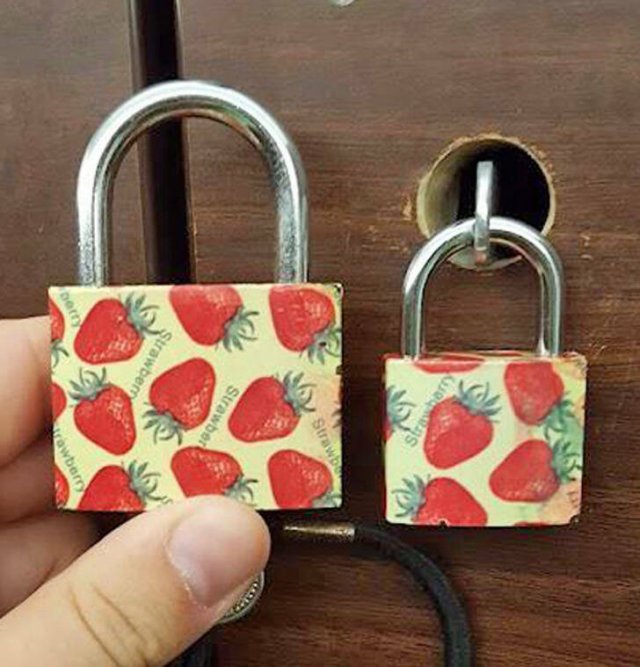
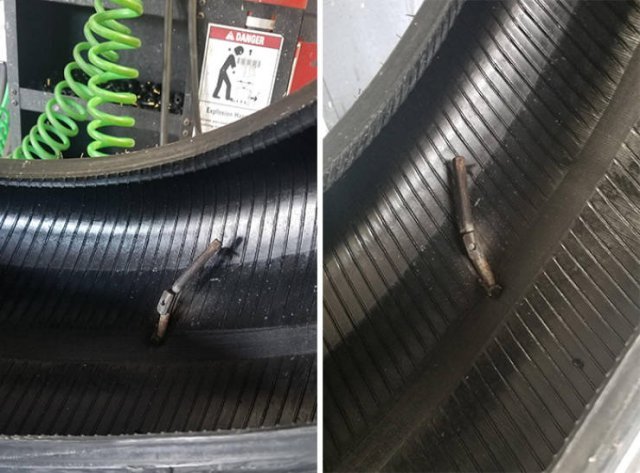
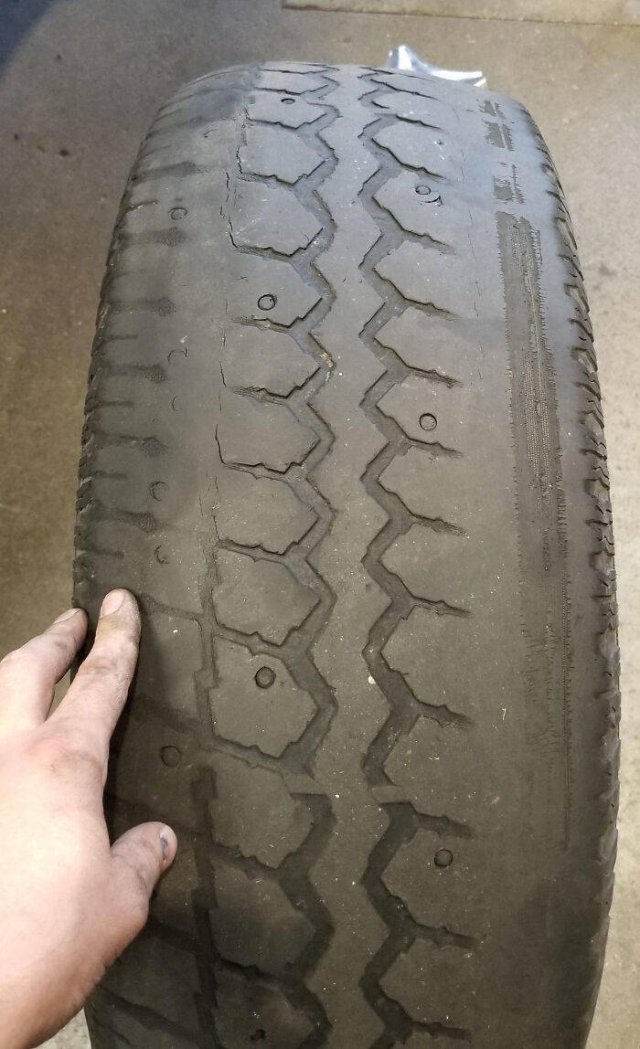


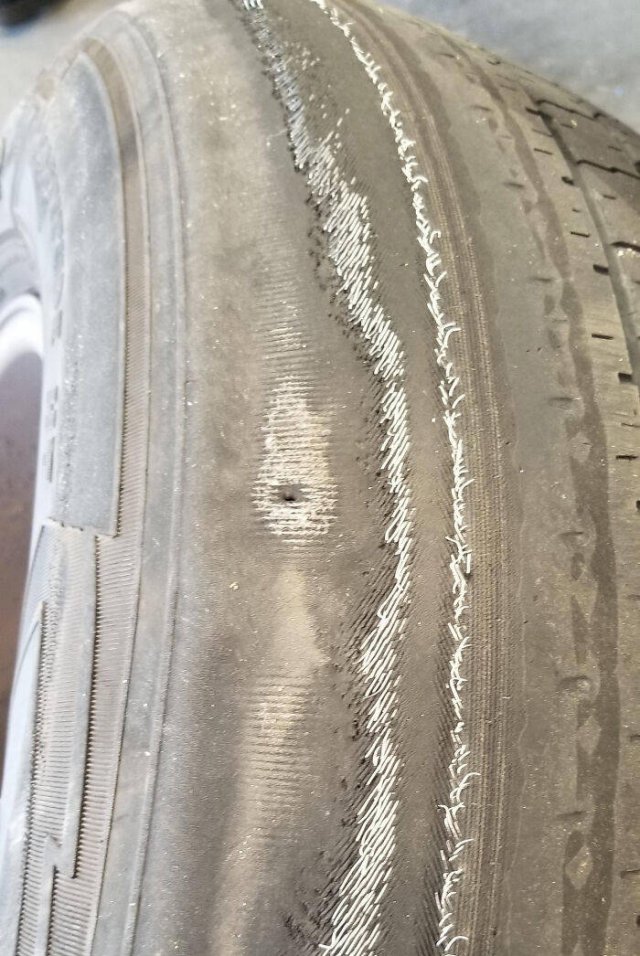

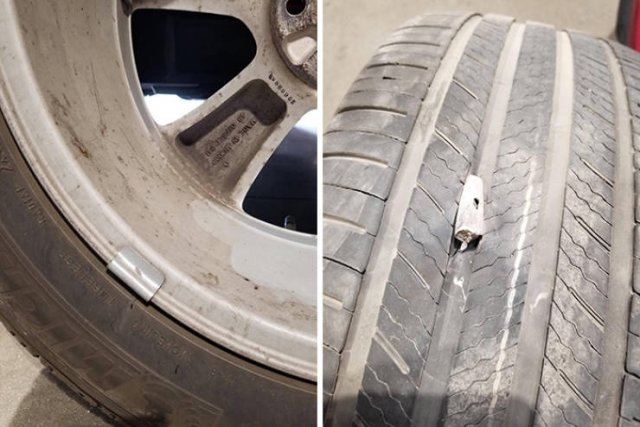
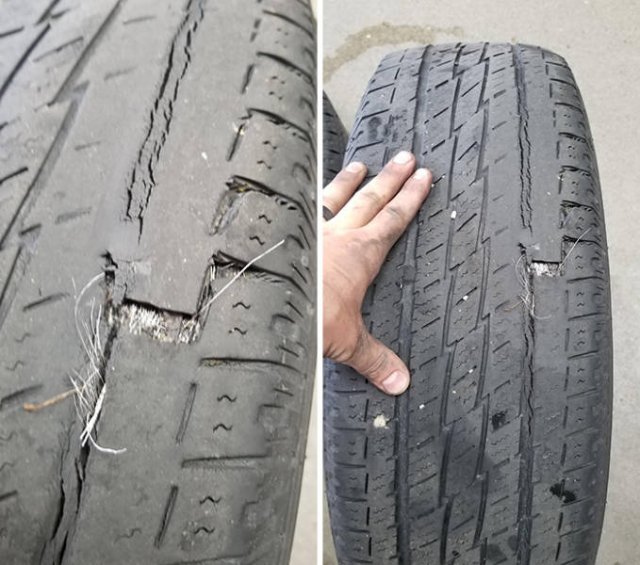
» AWESOME SPORTS GIF's...7
» LET's GO SHORTS & GIF's...6
» AWESOME SPORTS GIF's...6
» TATTOO YOU & REDO's TOO...15
» CREEPY PICS & PEOPLE...5
» MEME OOH LALA..35
» WORD DAILY Word of the Day: * centenary *
» Word Genius Word of the day * scintilla *
» APRIL NATIONAL CELEBRATION DAYS APRIL 28 2024
» Word Genius Word of the day * Aplomb *
» APRIL NATIONAL CELEBRATION DAYS APRIL 27 2024
» MEMEZONA...3
» SEEING RED & FRECKLES...14
» YES,........BUT